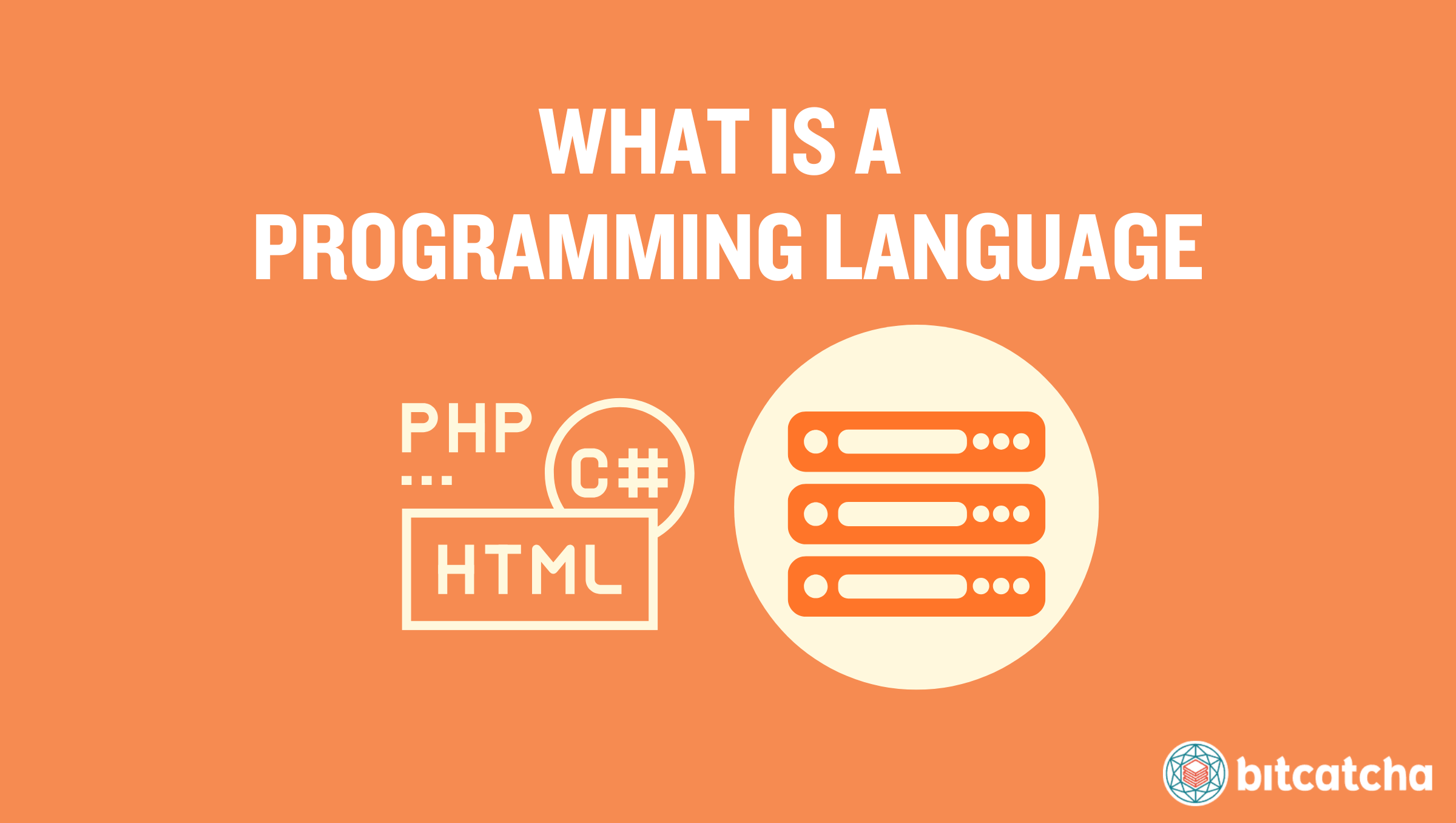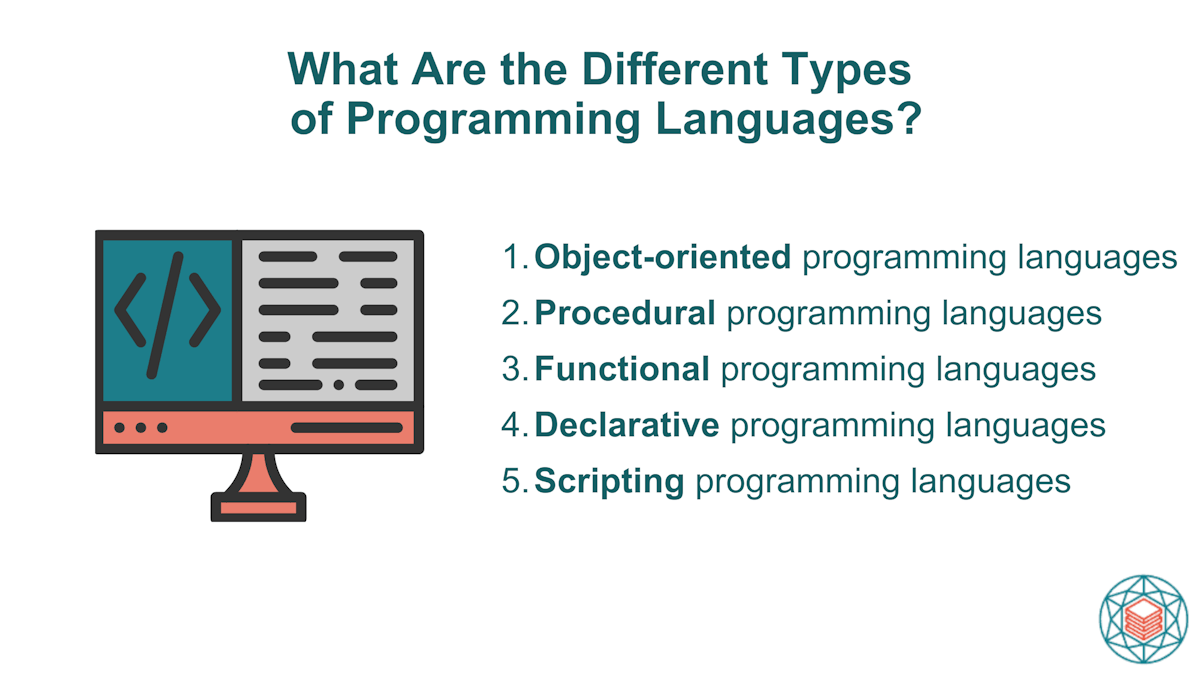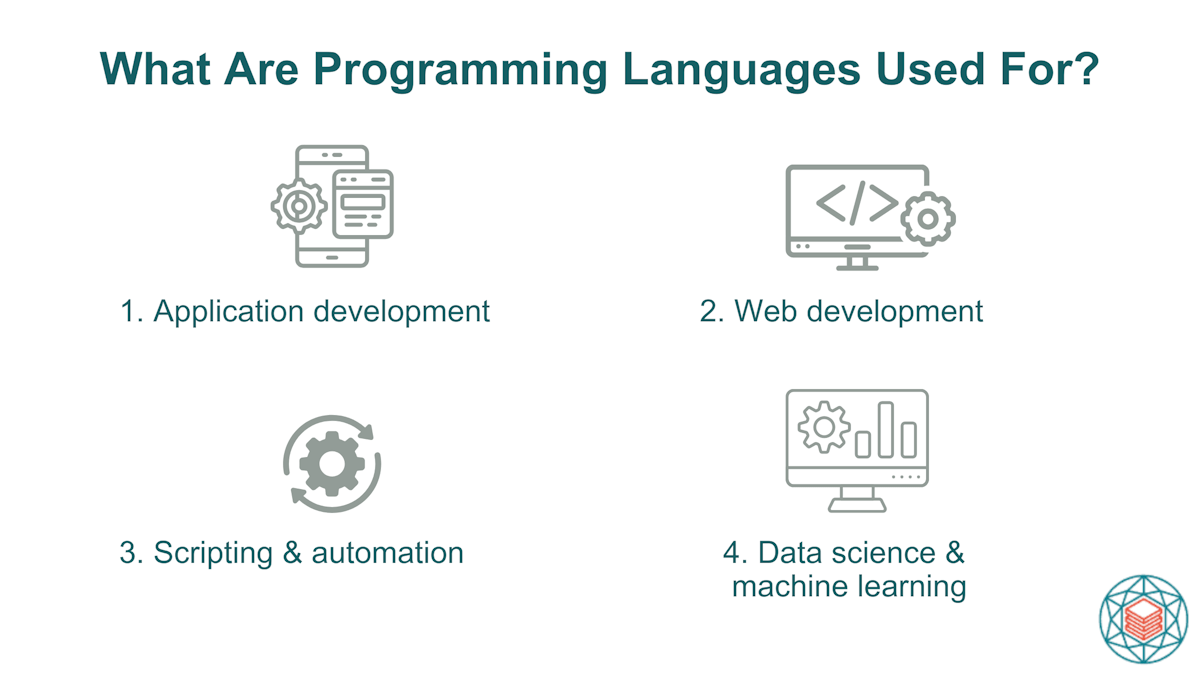A programming language is a set of structured instructions that enable developers to create software, automate tasks, and manage data. There are 5 types of programming languages: object-oriented, procedural, functional, declarative, and scripting.
10 popular programming languages are HTML/CSS, JavaScript, Typescript, PHP, Python, Ruby, C, Java, SQL, and Bash. The 4 main use cases of programming languages are application development, web development, scripting and automation, and data science and machine learning.
Java, Kotlin and Swift are common programming languages used in app development. Web development involves both front-end and back-end programming languages. Common front-end languages include HTML, CSS, and JavaScript, while common back-end development languages include PHP, Python, and Java. Ensuring compatibility between your backend language and web host is critical for smooth deployment. Most hosting providers support languages such as Python, Java, PHP, and Ruby on Rails. Which programming languages are supported in web hosting depends on 3 key factors: the host server’s operating system (OS), the runtime environment, and the choice of database. When choosing the right web host to complement your preferred programming language, first verify language compatibility. Then, assess the host’s value, features, performance, data center locations, customer support, and security features.

What Is a Programming Language?
A programming language is a structured set of instructions that allows developers to write code that computers understand and execute. It provides syntax and rules for defining logic, processing data, and automating tasks. Programming languages translate human-readable commands into machine-executable code. Some languages focus on specific tasks, such as web development or data analysis, while others are general-purpose.
What Are the Different Types of Programming Languages?

The types of programming languages refer to different coding approaches with unique characteristics. There are main 5 types of programming languages:
- Object-oriented Programming Languages
- Procedural Programming Languages
- Functional Programming Languages
- Declarative Programming Languages
- Scripting Programming Languages
1. Object-Oriented Programming Languages
An object-oriented programming (OOP) language is based on the concept of objects, which bundle data and methods together. OOP promotes code reuse, scalability, and modularity which make it useful for large applications. Key principles include encapsulation, inheritance, and polymorphism. Examples include Java, C++, Python, and Ruby. OOP is widely used in software development, game design, and web applications.
2. Procedural Programming Languages
A procedural programming language follows a step-by-step approach, and executes instructions in a defined sequence. It focuses on procedures or functions that operate on data. This approach is straightforward and efficient for tasks requiring clear, structured workflows. Examples include C, Pascal, and Fortran. Procedural languages are commonly used in system programming, embedded systems, and scientific computing.
3. Functional Programming Languages
A functional programming language treats computation as evaluating mathematical functions without changing state or modifying data. It emphasizes immutability, which means that data cannot be changed after it is created. Instead of modifying existing variables, new data is produced for every operation which avoids unintended side effects. It also emphasizes recursion, which is where a function calls itself to solve smaller instances of a problem. Examples of functional programming languages include Haskell, Lisp, and Scala. Functional programming is useful for data processing, concurrent computing, and artificial intelligence applications.
4. Declarative Programming Languages
A declarative language focuses on describing what a program must accomplish rather than detailing how to do it. It simplifies complex logic by letting developers specify the desired outcome. Examples of declarative languages include SQL for databases, HTML for web content, and Prolog for logical reasoning. It is commonly used for database queries, configuration management, and rule-based systems.
5. Scripting Programming Languages
A scripting language is designed for automating tasks, controlling software, and enhancing existing applications. It is often interpreted rather than compiled, which makes development faster and more flexible. Examples include JavaScript for web applications, Python for scripting tasks, and Bash for command-line automation. Scripting languages are widely used in web development, system administration, and automation.
What Are the Popular Programming Languages?
Popular programming languages refers to languages that developers use most frequently due to their efficiency, community support, and wide application. There are 10 popular programming languages:
- HTML/CSS
- JavaScript
- Typescript
- PHP
- Python
- Ruby
- C
- Java
- SQL
- Bash
1. HTML/CSS
HTML (HyperText Markup Language) is a markup language used to define the structure and content of web pages. CSS (Cascading Style Sheets) is a stylesheet language that controls their visual design. HTML organizes content using elements like headings, paragraphs, images, and links, which determine the page layout. CSS manages styling aspects such as colors, fonts, spacing, and responsiveness to different screen sizes. Together, they enable the creation of modern, visually appealing websites. They are not always categorized as programming languages, but are essential for front-end web development.
2. JavaScript
JavaScript is a dynamic scripting language that powers interactivity on websites and web applications. It enables features like animations, form validation, and real-time content updates in browsers. JavaScript is also used for backend development with environments like Node.js, which makes it a full-stack solution. Many frameworks and libraries, such as React.js, Angular, and Vue.js, extend JavaScript’s capabilities for building web applications.
React.js
React.js is a JavaScript library designed for building efficient, scalable, and interactive user interfaces. It allows developers to create reusable components, which reduces redundancy in code and improves maintainability. React uses a virtual DOM (Document Object Model) to optimize rendering, which improves performance in dynamic web applications. It is widely used for single-page applications (SPAs) and is supported by a strong community and ecosystem. React is particularly useful for building fast and modular front-end applications.
Angular
Angular is a full-featured front-end framework developed by Google for building dynamic web applications. It is built with TypeScript, which provides a structured approach to JavaScript development. Angular’s core features include two-way data binding, dependency injection, and component-based architecture. It is often used for large-scale enterprise applications due to its robust structure and maintainability. Its extensive ecosystem and built-in tools make it a powerful choice for developers working on complex web projects.
Vue.js
Vue.js is a progressive JavaScript framework that simplifies the development of user interfaces (UI) and single-page applications. It provides a reactive data-binding system, which makes it easy to update UI elements dynamically. Vue is lightweight and flexible, which allows developers to integrate it into projects gradually. It has a simpler learning curve than Angular, so it’s popular among beginners and small teams.
3. Typescript
TypeScript is a statically typed superset of JavaScript designed to improve code quality and scalability. It adds optional type annotations, which makes it easier to detect errors before runtime. TypeScript is commonly used in large-scale applications where maintainability and team collaboration are critical. It is the preferred language for frameworks like Angular and integrates seamlessly with JavaScript projects.
4. PHP
PHP is a server-side scripting language used for building dynamic web applications and processing backend logic. It is widely used in content management systems like WordPress, Joomla, and Drupal. PHP interacts with databases such as MySQL and PostgreSQL to store and retrieve information for websites. Frameworks like Laravel and Symfony extend PHP’s capabilities by providing structured architectures, built-in security, and efficient development workflows. PHP remains relevant despite newer technologies due to its widespread adoption, continuous updates, and strong community support.
Laravel
Laravel is a PHP framework designed for building secure and scalable web applications with ease. It follows the Model-View-Controller (MVC) architecture, which separates business logic from presentation. Laravel provides built-in features like authentication, routing, and database migration to streamline development. It also simplifies complex backend operations by offering tools like Eloquent ORM for database management, queue systems for handling background tasks, and built-in caching for performance optimization.
Symfony
Symfony is a PHP framework known for its modularity, flexibility, and performance in web development. It is built with reusable components that allow developers to create robust and scalable applications while reducing repetitive coding. Symfony follows strict coding standards and a well-structured architecture, ideal for enterprise-level applications that require maintainability and long-term support. It integrates well with other technologies and databases such as SQL and NoSQL systems, which enhances its adaptability.
5. Python
Python is a high-level, interpreted, and general-purpose programming language. It’s known for its versatility in web development, automation, data science, and artificial intelligence. It has a simple and readable syntax, and is popular with both beginners and professionals. Python’s extensive libraries, such as Flask and Django, simplify backend web development. It is also widely used for scripting, task automation, and API (Application Programming Interface) development. Python’s growing ecosystem makes it a dominant language in modern software engineering.
Flask
Flask is a lightweight Python web framework for building small to medium-sized applications. It follows a minimalistic approach, which is to provide only essential features while allowing developers to add extensions as needed. Flask is highly flexible and easy to learn. This makes it ideal for quick prototyping and microservices. It is commonly used for RESTful APIs, simple web applications, and backend development. Developers have complete control over project structure and design choices.
Django
Django is a full-featured Python web framework designed for rapid development and clean, maintainable code. It follows the “batteries-included” approach, which provides built-in authentication, ORM (object-relational mapping), and security features. Django’s MVC architecture ensures code organization and scalability in web applications. It is widely used in complex projects requiring high performance and security.
6. Ruby
Ruby is a dynamic, object-oriented programming language known for its ease of use and developer-friendly syntax. It is commonly used in web development, scripting, and automation. Ruby’s flexibility allows for rapid application development with minimal boilerplate code. It supports metaprogramming, so it’s highly adaptable for different programming needs. Ruby is often associated with the popular web framework Ruby on Rails.
Ruby on Rails
Ruby on Rails is a powerful web framework built with the Ruby programming language that follows the convention-over-configuration principle. It simplifies web development by providing built-in tools for database management, routing, and authentication. It is widely used for startups, eCommerce platforms, and scalable web applications. Rails emphasizes clean, maintainable code, which makes it a favorite among developers.
7. C
C is a low-level, compiled, and procedural programming language known for its efficiency, portability, and direct access to system hardware. It is commonly used in system programming, embedded systems, and operating system development. Many modern languages, including C++, Java, and Python, are influenced by C’s syntax and structure. C provides precise control over memory management, ideal for performance-critical applications. C remains widely used for developing high-performance software despite its complexity.
8. Java
Java is a platform-independent, object-oriented programming language used in enterprise applications and mobile development. It runs on the Java Virtual Machine (JVM), which allows code to execute on different operating systems. Java is widely used in backend development, Android applications, and large-scale systems. Its strong ecosystem includes frameworks like Spring for web development and Hibernate for database management.
9. SQL
SQL (Structured Query Language) is a declarative programming language used for managing and manipulating structured data in relational databases. It allows developers to store, retrieve, and modify data using commands like SELECT, INSERT, and UPDATE. SQL is the foundation of database systems like MySQL, PostgreSQL, and Microsoft SQL Server. It is essential for backend development as it enables seamless interaction between applications and data storage. SQL is widely used in web applications, business analytics, and data management.
10. Bash
Bash (Bourne Again Shell) is a command-line scripting language used in Unix and Linux environments. It automates repetitive system tasks, such as file management, process execution, and server administration. Bash scripts are essential for DevOps as it enables system automation and configuration management. It is commonly used by system administrators for deploying and maintaining servers.
What Are Programming Languages Used For?
Programming languages serve 4 primary uses: application development, web development, scripting and automation, and data science and machine learning.

Application development involves creating software programs for different platforms, including desktop and mobile environments. Web development focuses on building and maintaining websites and web applications, encompassing both front-end and back-end processes. Scripting and automation pertain to writing scripts to automate repetitive tasks and streamline workflows. Data science and machine learning involve analyzing data and developing algorithms that enable machines to learn and make decisions. Different programming languages are designed to excel in specific domains, facilitating efficient software development across diverse industries.
What Programming Languages Are Used in App Development?
The programming languages used in app development depend on the app’s target platform. For Android app development, Java and Kotlin are the primary languages. Kotlin is increasingly preferred due to its modern features and improved efficiency. For iOS development, Swift is the standard language for its seamless integration with Apple’s ecosystem. For cross-platform development, developers use C# with Xamarin and Dart with Flutter.
What Programming Languages Are Used in Web Development?
The programming languages used in web development depend on their role in front-end or back-end development. For front-end development, HTML is used for structuring web content, CSS for styling, and JavaScript for adding interactivity. For back-end development, server-side languages like PHP, Python, and Java handle application logic, database interactions, and server configurations.
The choice of back-end programming language also depends on the server capabilities of the web host. Web hosting refers to the service that stores your website or application files and makes them accessible online. Different web hosting environments support specific technologies, so it’s important to verify compatibility with your preferred programming language.
What Programming Languages Are Widely Supported in Web Hosting?
Most web hosting providers support a range of programming languages, including Python, Java, PHP, and Ruby on Rails. Certain web hosts are more developer-friendly than others. Choosing developer-friendly hosting gives you wider access to more programming languages as well as helpful tools like root access, Git integration, and staging environments.
The languages supported in web hosting are influenced by 3 key factors: the server operating system (OS), runtime environment, and database compatibility.
How Does a Server OS Affect the Use of Programming Languages?
A server OS affects the use of programming languages by determining which languages and frameworks a web host supports. A server operating system is software that manages server hardware and provides the platform to run applications, manage resources, and support network services.
The 2 most common server operating systems are Linux and Windows. Linux-based servers offer native support for PHP, Python, Ruby, and Node.js. Windows-based servers are optimized for ASP.NET, C#, and Microsoft SQL Server..
Why Is Runtime Environment Important for Programming Languages?
A runtime environment is important for programming languages as it provides the necessary infrastructure for their code execution, including memory management, input/output operations, and system resource allocation. Each runtime environment ensures that its respective programming language functions correctly by managing resources and interactions between software and hardware. For example, Java relies on the Java Virtual Machine (JVM). Python uses the CPython interpreter. JavaScript executes within browser engines like V8 in Chrome. PHP operates within server environments such as Apache or Nginx. Ruby runs on its MRI interpreter.
How Does Database Choice Affect the Use of Programming Languages?
Database choice affects the use of programming languages by determining which languages and frameworks are able to interact efficiently with data storage systems on the server.
2 common forms of databases are relational databases (such as MySQL, PostgreSQL, and Microsoft SQL Server) and NoSQL (such as MongoDB and Firebase). Each works best with certain programming languages. For example, SQL databases pair well with languages that support structured queries, such as PHP, Python, and Java. NoSQL databases are often used with JavaScript, Node.js, and Python.
How Do I Choose a Web Host for Certain Programming Languages?
To choose a web host for certain programming languages, first, determine if the host supports your preferred programming language and framework. Check the fine print or contact their customer support to verify that the server OS and runtime environment are compatible with your chosen language. After shortlisting compatible providers, proceed to choose the best host by checking it meets key criteria beyond language support. This includes value-for-money, generous features, high performance, strategic data center locations, responsive support, and strong security.
